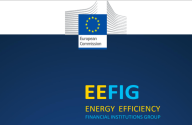Filter by
Publications (103)
RSS
The quantitative relationship between energy efficiency improvements and lower probability of default of associated loans and increased value of the underlying assets

This module covers basic information on citizen financing, including definition, characteristics, opportunities and barriers, while, also, providing step-by-step guidelines on how projects can be financed and what can be learned from the best practices and case studies in the European Union.

This module covers all these interventions falling under two or more thematic modules; climate change adaption; local electricity production e.g. wind power, hydroelectric power, photovoltaic; and local heat/cold production e.g. combined heat and power and district heating plant.

This module covers the provision of public lighting, such as street lighting and traffic lights owned or operated by public authorities.

This module covers the provision of and management of mass transit by public authorities. as well as private transport.

This module covers buildings and facilities owned, managed or controlled by private individuals. This refers to the tertiary sector (services), such as the private companies, banks, commercial, and retail activities, hospitals, etc. and residential buildings, including social housing.

This module covers buildings and facilities owned, managed or controlled by public authorities. Facilities refer to energy consuming entities that are not buildings, such as wastewater treatment plants.

Read this study from Enefirst to find out more about the level of end-use energy efficiency measures in the building sector.


The Energy and Industry Geography Lab is a tool for geographical data related to energy, industry and infrastructure, developed and maintained by the Joint Research Centre of the European Commission.
